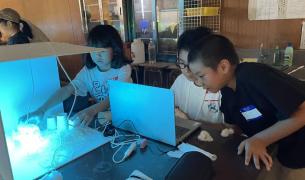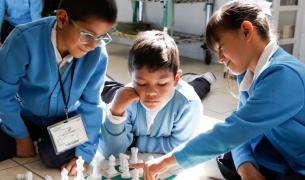The Importance of Trust

A trust culture
The purpose of schools is to develop a place where all students learn at high levels. In order to achieve this, we must establish meaningful relationships. As a former principal, one of my main responsibilities was to help facilitate these relationships. And an essential component of meaningful relationships is trust. Trust is safety. Trust is comfort. Trust is feeling that someone has your back. Trust is an environment where individuals can be their best selves.
Building trust is a process. And it's not just about trust between teachers and students, but between teachers and other teachers, and support staff too. The end goal is the moment we can collectively have honest dialogue about our students, our practices and our impact. The perpetual question to be answered is this: is learning happening here or not? Teachers need to be able to talk to their colleagues, discuss how to improve, learn from what is working and observe other classes.
At our school, relying on trust allowed us to better deal with school accountability. As a principal, my teachers were steeped in data analysis. We would do it regularly and publicly. We used the information to change our practices, to see what was working and what wasn't. It gave us a gauge, so teachers could look at the information and compare class-to-class, and school-to-school. We then had a real way to ground the conversation in multiple pieces of authentic evidence.
The principal as a trust-builder
As principal, I wanted teachers to experience what a culture of trust looked like in my school. One of the first things I wanted new staff members to do is see the other classrooms. I paired new teachers with mentors. I observed them. Mentors teachers observed them. We videotaped and watched the tapes together and debriefed what was happening.
I wanted to instill the mindset that we're not perfect but we're all going to get better and we're all going to help each other to get better. Without trust this is very difficult to achieve. I kept saying to myself, "man, what a great place we are at now that teachers can videotape each other and watch clips at a staff meeting!" I felt we came a long way.
And when things weren't going the way I expected them, it was my responsibility to have the courage to say: I need more from you and our students need more from you. Of course, all these conversations wouldn't have happened unless they were structured and practiced in a supportive environment.
My role as principal was to support teachers, and if they needed something to be better, it was my job to figure out how to get that for them. Sometimes they just needed time, resources and new ideas. It's was my responsibility to make all those things easily accessible.
How to build trust
- Plan it like you plan a lesson- You don't have to be special to build trust. The most important thing is to invest time in nurturing the relationships. If you don't plan for it, it may be overlooked and not happen. I planned for building trust the same way I would plan a staff meeting on routine data analysis. We would make sure to structure time for appreciation of our students and staff. Start with small things. For example, we would spend time at staff meetings writing "Proud Postcards” to students. Each teacher chose three students and we would write to these students and their parents to tell them why we were proud of them. It was always a nice surprise when they received them in the mail and read the thoughtful comments. Similarly, we also spent time at meetings to recognize each other, share something we had learned or to appreciate a kind gesture.
- Focus on students as individuals- Nurture relationships by focusing on student growth. In our case, I would meet my teachers every Tuesday at staff meetings, but on-going we had grade level check-ins, where we would sit down and put a picture of every kid in the center of the table. We talked about their strengths, how they were doing, and about our goals for them. And I loved Tuesdays, because I really got to find out about how we were progressing. I just felt like I always left that day much closer to my students and teachers.
- Establish a peer support group- You need a support group to celebrate with, reflect with, vent with, rejuvenate with and improve with. For me it was the Elementary Principal team of my former district. We met weekly, but I would text, call and email them daily. I relied on them to bounce ideas off, to share practices or just to talk about doubts I may have had about my own actions. The other principals had been through the same things as me, so, with them, I felt that I could be the most real.
LaKimbre's key lessons
- Trust is the most essential element in building relationships and improving learning
- Once trust is embedded in the school culture, you can have more powerful conversations to help everyone grow and improve
- It's not hard to build trust. To do so, start by investing time and giving structure to trust-building spaces such as recognizing and supporting others
Reflect & Share
How do you build trust among your colleagues? Have you ever had to repair trust that had been broken? How did you do it?



